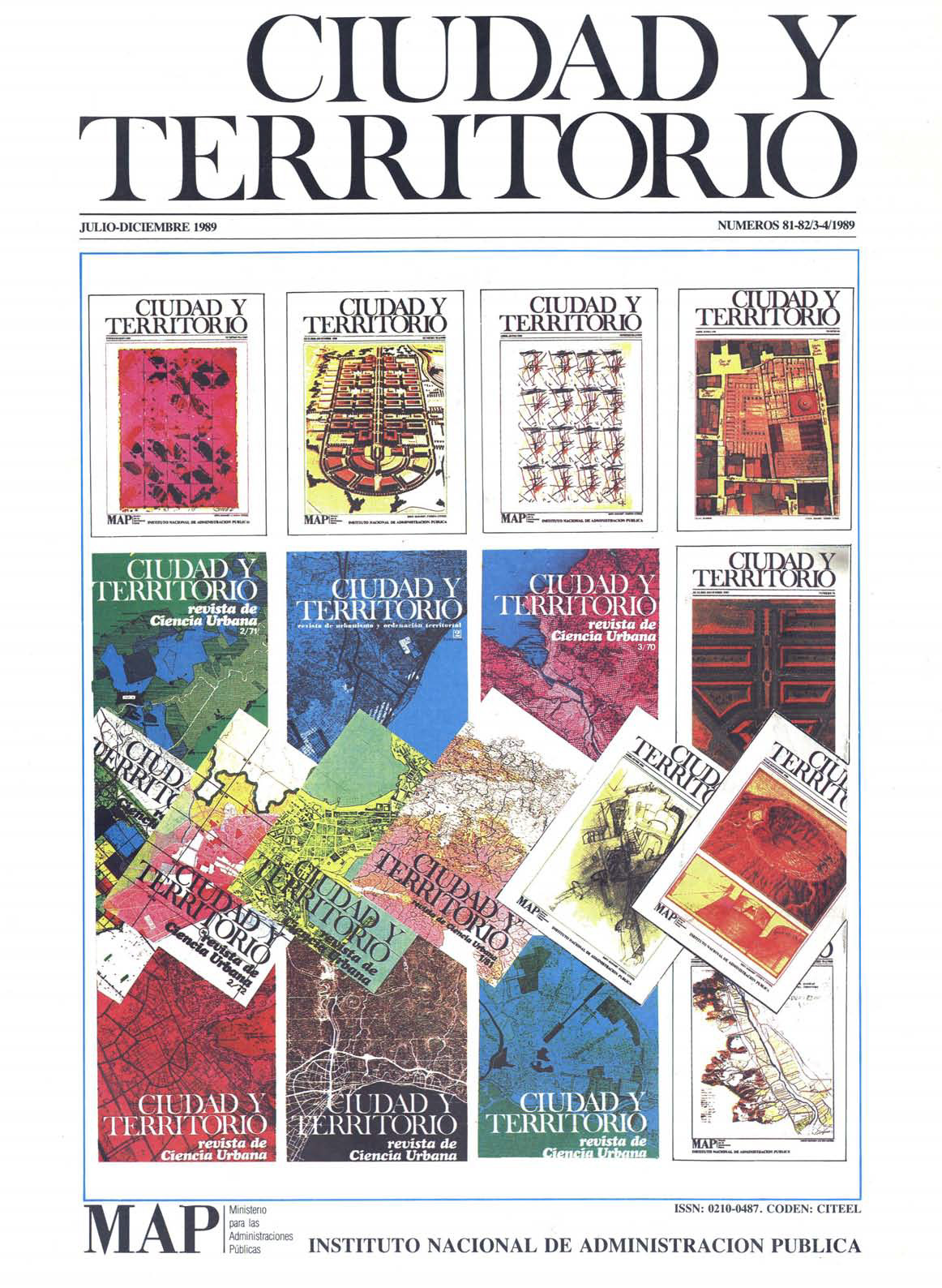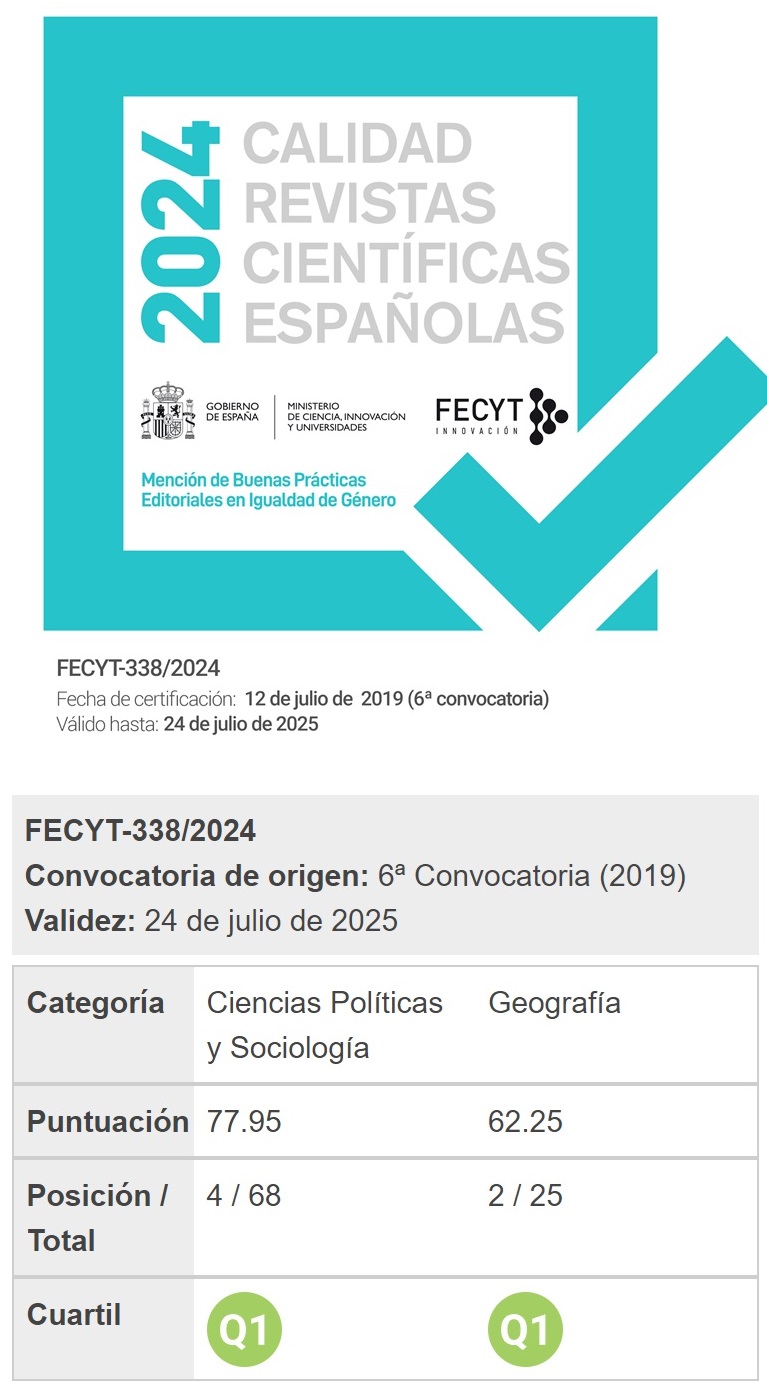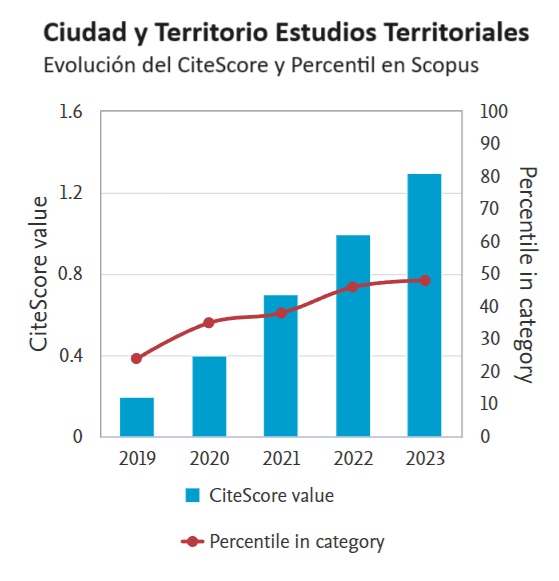Pasado, presente y perspectivas de la planificación regional en España
Resumen
Durante las últimas décadas España ha conocido sucesivamente altos ritmos de crecimiento económico, los efectos de una grave crisis, la transformación en un Estado autonómico y la integración en la Comunidad Europea. A cada una de estas etapas corresponde una diferente situación de la planificación regional. AI abandono de la planificación regional concurrieron la crisis económica, el auge del neoliberalismo, el escaso éxito de las políticas regionales emprendidas y la sustitución de su función legitimadora por otros instrumentos. En España influyeron, además, las prisas por borrar las imágenes que pudieran recordar el tardofranquismo. Recientemente España se ha incorporado al nuevo ciclo de recuperación de la planificación regional. Después de la elaboración de múltiples planes regionales por todas y cada una de las Comunidades Autónomas, el Gobierno ha aprobado en 1989 una estrategia territorial a largo plazo, partiendo de una clasificación tipológica de las regiones españolas y apoyándose en una acciones para las que contará con financiación de los Fondos Estructurales Comunitarios, particularmente del FEDER. Es significativa la importancia que se concede a la dotación de infraestructuras y equipamientos para promover el desarrollo y articular el territorio, frente al papel que en otro tiempo se quiso dar a los incentivos regionales.
Descargas
Descargas
Publicado
Cómo citar
Número
Sección
Licencia
Derechos de autor 1989 Laureano Lázaro Araujo

Esta obra está bajo una licencia internacional Creative Commons Atribución-NoComercial-SinDerivadas 4.0.
Sin perjuicio de lo dispuesto en la legislación vigente sobre Propiedad Intelectual, y conforme a la misma, el/la los/las autor/a/es/as que publiquen en CyTET cede/n a título gratuito, de modo no exclusivo y sin límite temporal al Ministerio de Transportes, Movilidad y Agenda Urbana los derechos para difundir, reproducir, comunicar y distribuir en cualquier formato actual o futuro, en papel o electrónico, la versión original o derivada de su obra bajo licencia de Creative Commons Reconocimiento-NoComercial-SinObraDerivada 4.0 Internacional (CC BY-NC-ND 4.0), así como para incluir o ceder a terceros la inclusión de su contenido en índices, repositorios y bases de datos nacionales e internacionales, con referencia y reconocimiento en todo caso de la autoría del mismo.
Además, al realizar el envío, el/la los/las autor/a/es/as declara/n que se trata de un trabajo original en el que se reconocen las fuentes que han sido utilizadas en su estudio, comprometiéndose a respetar la evidencia científica y a no modificar los datos originales para verificar o refutar una hipótesis de partida; que el contenido esencial del mismo no ha sido publicado previamente ni se publicará en ninguna otra obra o revista mientras esté en proceso de evaluación en la revista CyTET; y que no se ha remitido simultáneamente a otra publicación.
Los autores deben firmar un Formulario de Cesión de Derechos, que les será enviado desde la Secretaría de CyTET una vez se acepte su artículo para ser publicado.
Con el objetivo de favorecer la difusión del conocimiento, CyTET se adhiere al movimiento de revistas de Open Access (OA) y entrega la totalidad de sus contenidos a diversos índices, repositorios y bases de datos nacionales e internacionales bajo este protocolo; por tanto, la remisión de un trabajo para ser publicado en la revista presupone la aceptación explícita por parte del autor/a de este método de distribución.
Se anima a las/os autoras/es a reproducir y alojar sus trabajos publicados en CyTET en repositorios institucionales, páginas web, etc. con la intención de contribuir a la mejora de la transferencia del conocimiento y de la citación de dichos trabajos.








 Enlace a CyTET en Linkedin
Enlace a CyTET en Linkedin